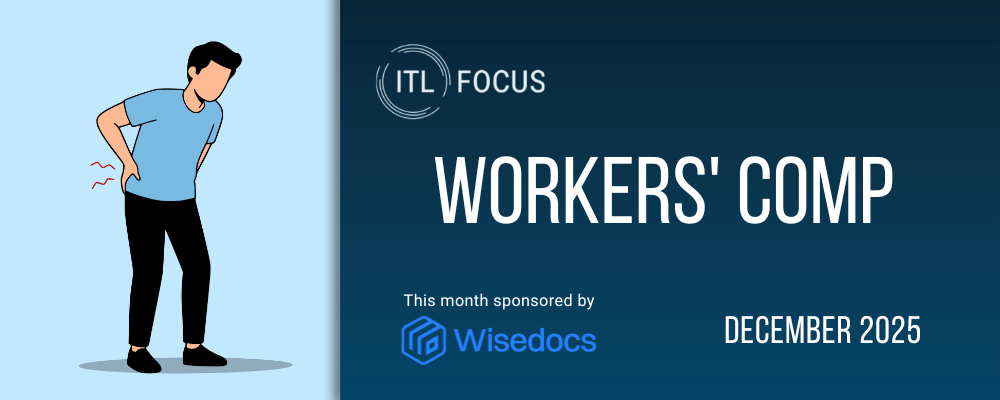Watching people try to recover from injury can be baffling. Some recover function quickly; others do not. Why is there so much variability with severity and duration of disability, given similar injuries or illnesses? Why do some individuals get stuck in delayed recovery?
Our medical system has tended to focus on the physical: If there is back pain, there must be something going on in the disc, vertebrae or nerve roots. That approach isn't bad. Medicine has made a lot of progress with that tactic. But sometimes a physical cause isn't apparent.
If we examine what else may be happening in people's lives, what they're thinking and what they're feeling, we start to uncover circumstances and behaviors that may be delaying their recovery.
The Hartford is focusing on a different and promising approach that looks beyond the physical aspects (such as symptoms, physical findings, test results) and looks at the whole person as a
biopsychosocial being who may have non-physical barriers that are delaying recovery. The Hartford has developed a program that offers help to assist people in getting unstuck.
Internal data analytics indicate the presence of psychosocial risk factors can account for a two- to four-fold increase in disability duration of work-related injuries.
Background
The biomedical model has served as the traditional foundation of our understanding of the body and has formed the bedrock of modern Western medicine. In essence, this model reduces illness and injury to their most basic units; the body is seen as a machine that operates on the basis of physical and chemical processes. In other words, find out what's wrong with the body and fix it.
The biopsychosocial model seeks to amplify the biomedical model by addressing an individual holistically as a physical, psychological and social being.
The 1970s saw pioneering work in the treatment of chronic pain by using psychological — or behavioral - principles. For instance, W.E. Fordyce at the University of Washington found that helping patients with pain behave normally (that is, getting them to stop displaying pain behaviors) led to improvements in function.
In the 1980s, cognitive behavioral therapy (CBT) began to be used in treating chronic pain patients. CBT tries to change patterns of thinking or behavior that are behind a person's difficulties all to change how they feel.
In the past 20 years, some have shown the usefulness of interventions based on specific psychosocial risk factors for pain and disability. Much of this work has been carried out in Canada, Europe, Australia and New Zealand.
See also: Better Outcomes for Chronic Pain
The medical and research literature points to social and behavioral factors -- like fear, expectation of recovery, catastrophic thinking and perceived injustice -- as powerful forces that can delay recovery after an injury or illness. As one example, a 2015 WCRI study showed that fear of getting fired could affect a worker's return to work after an injury.
The Hartford Approach
Armed with an understanding of these drivers of disability, The Hartford is using its advanced data analytics and developing innovative solutions to help workers at risk regain the function they had before an injury or illness.
A patented text mining technique allows us to look for psychosocial, comorbid and other risk factors to identify, early on, individuals who demonstrate a likelihood to have a prolonged disability. By combining this early identification tool with a growing toolkit of interventions, we are finding new ways to help individuals restore their lives after an injury or illness.
One such tool is a proprietary, telephonic coaching intervention. Having identified claimants who show an elevated risk for prolonged disability, we invite them to participate in a program that matches them with a specially trained coach who helps them overcome psychosocial barriers. By equipping individuals with skills and techniques to change the way they think, feel and act, we help them develop confidence to take control of their recovery. This confidence allows them to increase function in all areas of life, including return to work.
The voluntary program, called iRECOVER(SM) uses phone calls with the coach, along with a workbook and homework assignments. It can last several weeks.
Although still in its early days, iRECOVER shows promising results: earlier return to function and return to work.
Participant feedback has been very positive. For instance, we have received emails and letters from injured workers that say:
- "There's light at the end of the tunnel."
- "I feel confident going back to work. A good part of this is due to my participation in iRECOVER."
- "I think what you do is probably as important as medical treatment."
- "iRECOVER helped me be courageous and strong."
See also: Data Science: Methods Matter (Part 1)
Conclusion
By considering the whole patient, applying potent data analytics and developing innovative solutions, we are getting to the root of delayed recovery for many individuals. The results will benefit all concerned, especially the injured worker, who just wants life to get back to normal.






